Shichahai is both a historical and cultural scenic area and a historical and cultural protection zone in Beijing. It is located in the Xicheng District, which is in the downtown and adjacent to the central axis of Beijing. It covers a water area of 336,000 square meters and connects with the water area of Zhongnanhai (Central and Southern Seas). Shichahai is the only open scenic area with open water in the Inner City of Beijing and the largest and most well-preserved historical block in Beijing, playing a unique role in the planning and construction history of Beijing.
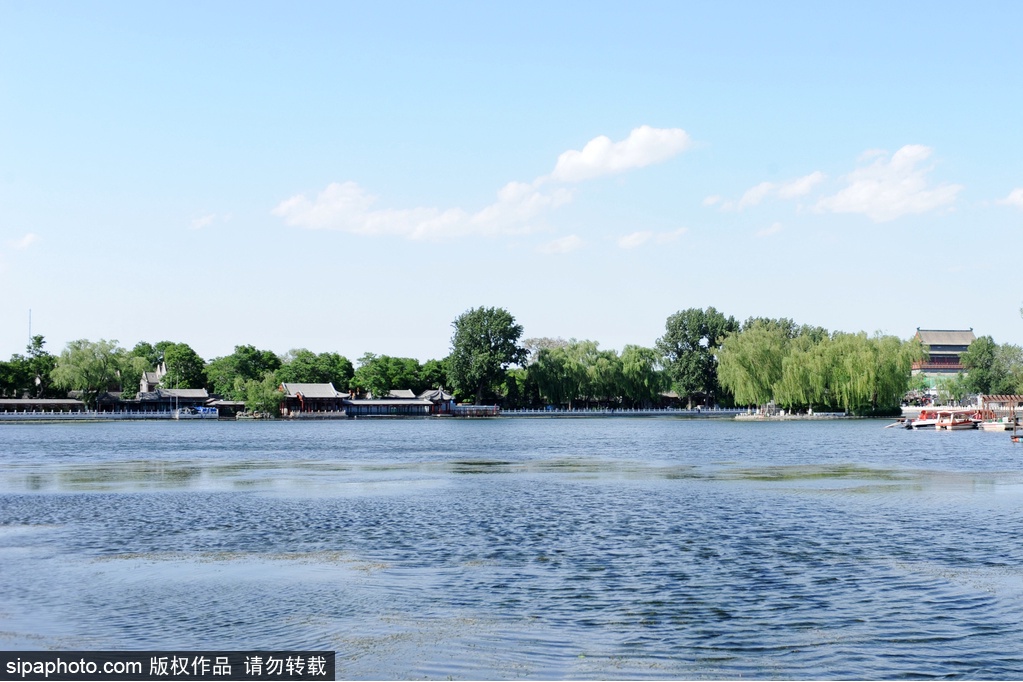
It includes three water areas: Qianhai (Front Sea), Houhai (Back Sea) and Xihai (West Sea, also known as Jishui Pond) and surrounding areas. These three seas are known as "Housanhai", echoing with the "Qiansanhai", i.e. Nanhai (Southern Sea), Zhonghai (Central Sea) and Beihai (Northern Sea). Shichahai got its name as it was surrounded by 10 Buddhist temples. It has become a mecca for people to enjoy entertainment and escape hot summer since the Qing Dynasty. A lot of ancient buildings in the Shichahai Scenic Area play an important role in the urban construction and development history and political and cultural history of Beijing. Among them, Prince Gong's Mansion and Garden, Former Residence of Soong Ching Ling, Prince Chun's Mansion, Memorial Hall of Guo Moruo, Drum and Bell Towers, Archery Tower of Desheng Gate, Guanghua Temple, Huitong Temple and Huixian Hall.
The charm of Shichahai is praised in the famous book A Glimpse of Beijing, the Ancient Capital (Dijing Jingwulue), "comparable to the spring of West Lake, the summer of Qinhuai River and the autumn of Dongting Lake." The Shichahai Scenic Area is picturesque, hailed as the "Water Town in the North". As tourists increase, some stores featuring ancient culture, snack streets and bars have gathered here, creating one of the cultural streets in Beijing.

Located in the northwest of the central axis of Beijing, the Shichahai Scenic Area starts from the north of Di’anmenwai Street in the east; in the south, it spans from the Di’anmen West Street to the west to Longtoujing, then to the northwest to cover the Liuyin Street, Yangfang Hutong and Xinjiekou East Street to the Xinjiekou North Street, and in the west, it starts from the Xinjiekou North Street to the north to Xinjiekou Huokou; in the north, it starts from the Xinjiekou Huokou to the east to the Desheng Gate, covering the Gulou West Street to the Bell and Drum Towers from the Desheng Gate.
The Shichahai Scenic Area boasts its historical and cultural advantages. There are more than 40 cultural relic protection units, accounting for more than one third of those of the Xicheng District. In history, this area housed more than 30 palaces of princes, nunneries and temples, among which dozens still exist. The 34-hectare water area of Shichahai integrates naturally into the urban block. Relying on the bodies of water, the weeping willow by the bank of the lake and the lotus blossoms in the water also constitute unique natural landscape of Shichahai. The "Mountain Viewing in Yinding Bridge", one of the "Additional Eight Great Sights of Yanjing" is typical in the scenic area. Shichahai embraces a string of typical Hutongs and Siheyuans, such as Dajinsi Hutong and Xiaojinsi Hutong in Jinsitao Area, Nanguanfang Hutong and Beiguanfang Hutong, Ya'er Hutong by the Houhai Beiyan, Baimi Byway and Yandai Byway.
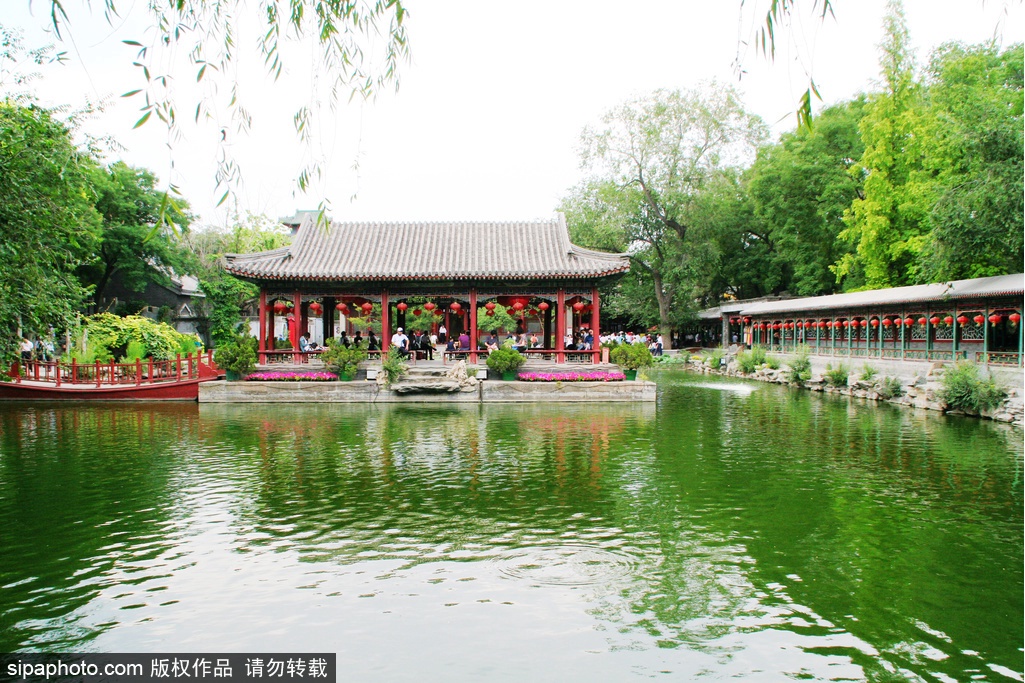
Recommended scenic spots
Prince Gong's Mansion
The Prince Gong’s Mansion is located in the northwest corner of Shichahai. As a typical palace garden, it is symmetrical along a central axis. Originally built in the late eighteenth century, it is the most well-preserved palace of a prince in Beijing and hailed as the "Pearl of Shichahai". The mansion was the residence of He Shen, Grand Secretary in the later period of Emperor Qianlong's reign and granted to Yixin, Prince Gong, as his residence. At the back of the mansion stands a unique garden named Cuijin Garden, covering an area of about 30,000 square meters. The garden was surrounded in the east, south and west by a U-shaped soil hill, and the scenery inside the garden is unique and charming. It is a major historical and cultural site protected at the national level. The part in the front of the mansion housed the Institute of A Red Dream of Mansions, Chinese National Academy of Arts. After the institute was moved out later, it was restored and is open to the public. Another part of the Prince Gong's Mansion is used as the Former Residence of Guo Moruo and is open to the public too.
Prince Qing's Mansion
Prince Qing's Mansion is one of the existing palaces of princes in Beijing. Yonglin, Prince Qing in the first generation, was the 17th son of Emperor Qianlong in the Qing Dynasty, Emperor Jiaqing's younger brother. The old Prince Qing's Mansion, a part of He Shen's Mansion, was located in the north of Qianhai West Street. In the 30th year of Emperor Daoguang's reign, Yikuang, a descendant of Prince Qing, Yonglin, succeeded to the title of Fuguo Jiangjun. In the first year of Emperor Xianfeng's reign, Xikuang was ordered to move from the old mansion to the former Grand Secretary Qishan's residence in the Dingfu Street. The residence was renovated greatly according to the regulations on the palace of a prince and called the mansion of the prince. Meanwhile, Yikuang had many new buildings built in the mansion, including the Wanzi Tower and Theatrical Stage. The buildings inside the mansion were magnificent and spacious. The mansion was divided into five large courtyards with almost one thousand buildings of various sizes. There were a vermilion gate and a lofty palace. The mansion, however, was roofed with earth tiles rather than glazed titles. This mansion was one of the most magnificent palaces of princes. After the Republic of China, it was taken over and used by the army.
Drum and Bell Towers
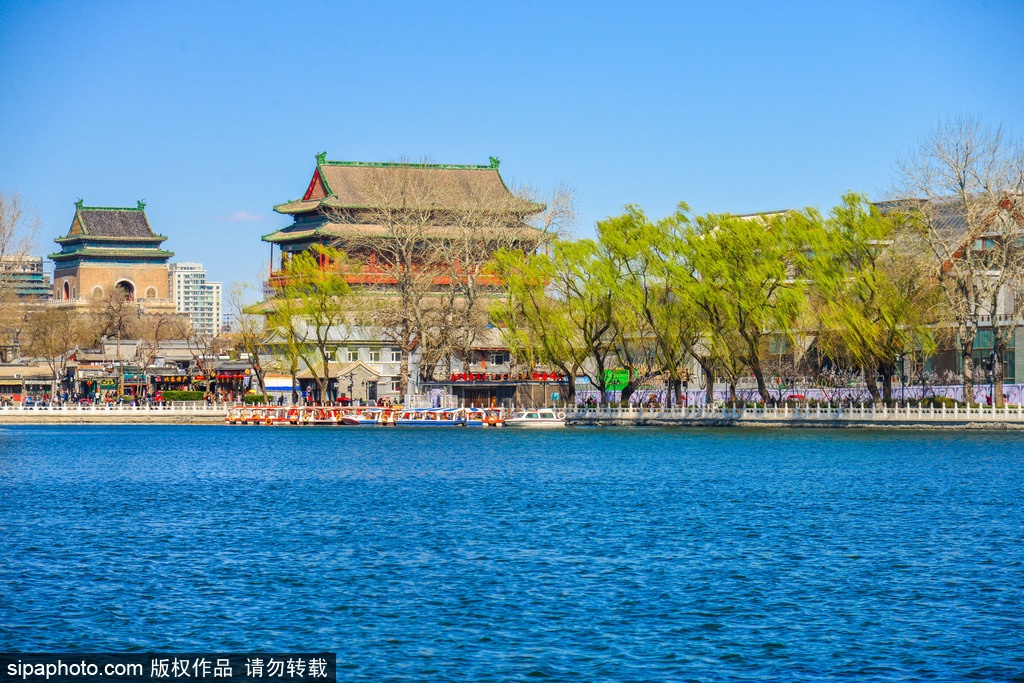
The first watch at 20:00 indicating the beginning of the five two-hour periods into which the night was formerly divided was started by "beating the drum first and then the bell"; from the second two-hour periods to the fourth, "only the bell is beaten"; in the fifth watch, "the drum is beaten first and then the bell." In terms of the way, the drum was beaten fast for 18 echoes and then beaten slowly for another 18 echoes. There were a total of 108 echoes for six times. The bell was beaten in the same way.
Temple of Guan Yu and Yue Fei
The Temple of Guan Yu and Yue Fei is located at No. 149, Gulou Street West, Xicheng District. This site housed the Temple of Prince Chunxian, the seventh son of Emperor Daoguang. The Temple of Prince Chunxian was originally built in the 17th year of Emperor Guangxu's reign and completed in the 25th year of Emperor Guangxu's reign. The Temple of Guan Yu and Yue Fei, a three-tier courtyard, faces the south. The middle courtyard has yards in the east and west. In the central axis, there are a glazed screen wall facing the gate of the temple and a central gate, with an inverted V-shaped wall in the periphery and a glazed gate in both sides respectively; in the middle courtyard, the Silk Burning Stove is in the east and the Sacrificial Utensil Pavilion in the west; there was a seven-bay main hall, with a platform in front of the hall, and five-bay side halls in the east and west respectively; there was a five-bay bedroom at the back. The construction area is about 3,000 square meters. In the third year of the Republic of China, the Beiyang Government molded statues of Guan Yu and Yue Fei in the Houqin Hall and consecrate the two figures. Thus the Temple of Guan Yu and Yue Fei got its name.
Guanghua Temple
Guanghua Temple is located at No. 31, Ya'er Hutong, in the north of Shichahai, and is a large Buddhist temple. The temple was originally built in the Yuan Dynasty. Legend has it that an eminent monk begged alms with a bowl and collected donations to build it. The temple got its name accordingly.
Yinding Bridge
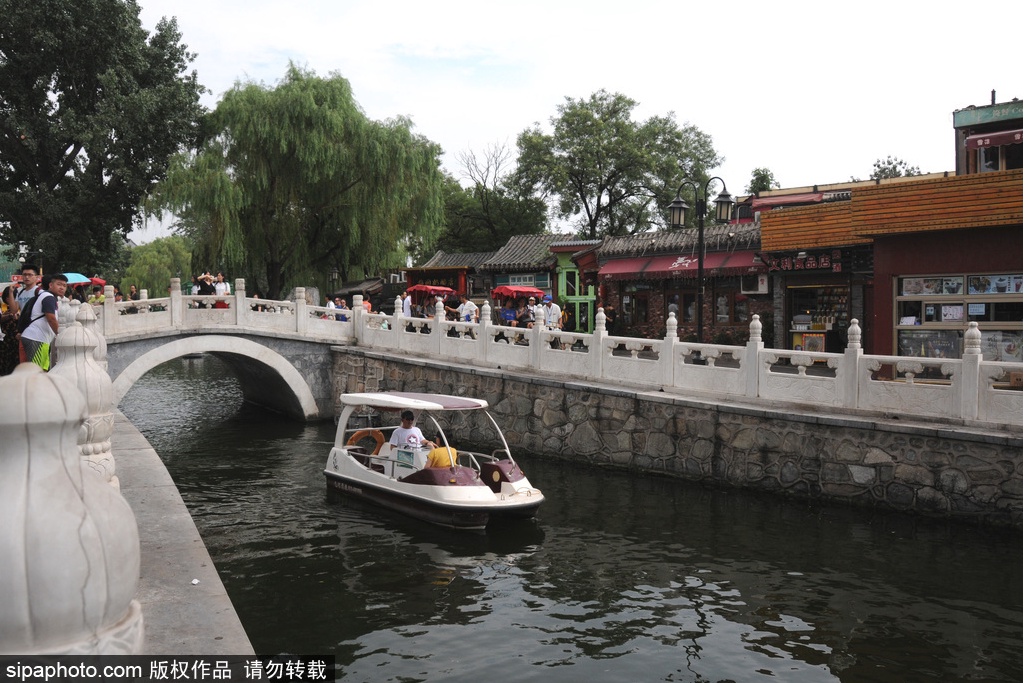
The Yinding Bridge is located between Houhai and Qianhai. It was a single-arch stone bridge spanning south to north in the southern end of Yandai Byway, and got its name because it was like a silver ingot in shape. Standing in the bridge, you can enjoy the beautiful scenery of Xishan Mountain in a fine day. In 1910, Wang Jingwei assassinated Zaifeng, the Regent. Yinding Bridge is the earliest bridge in Beijing.
Huitong Temple
The Huitong Temple is located in A60, Deshengmen Street West. It was built by Yao Guangxiao in the Emperor Yongle's reign of the Ming Dynasty. It was named Fahua Temple, also known as the Zhenshui Guanyin Temple. In the 26th year of Emperor Qianlog's reign (1761 AD) in the Qing Dynasty, the temple was rebuilt and given the name Huitong Temple. It was built in a soil hill of Xihai in the Shichahai, surround by water in four sides, with the north as the water gate. The temple faces the south. There is a gate, a three-bay front hall and a three-bay side hall in the east and west respectively. In the back yard, there are a three-bay hall, a front annex, and three side rooms in the left and right respectively, and there is a three-bay side hall in the west and east respectively, with a plaque saying "Chaoyin Pujue" and "Gongjian Liji". A poem tablet made by the order of Emperor Qianlong in the 26th year of his reign (1761 AD) stands in the temple.
Prince Gun's Mansion
Prince Gun's Mansion is located in the north of Xinjiekou Street East, also known as New Mansion of Prince Cheng (Yunzhi). This is recorded in Xiaoting Miscellany, "The New Mansion of Prince Cheng is located in Jiangjiafang." The old mansion of Prince Cheng was located in Guanyuan. Because he was granted the rank of Prince Shen, a new mansion was built in Jiangjiafang (Xinjiekou East Street). After Yunzhi died in the 10th year of Emperor Yongzheng's reign, his seventh son Hongjing succeeded to the owner of the mansion. In the eighth year of Emperor Yongzheng's reign, Hongjing was granted the title of beizi, Prince of the Fourth Rank, so the mansion was also called as Gushan Beizi Hongjing's Mansion (General Knowledge on Imperial Palace, Chenyuan Shilue). In the late Qing Dyansty and the Republic of China, the mansion was called Prince Gun's Mansion. This mansion existed in the Republic of China. In the 1950s, most of buildings in the mansion were demolished to build Beijing Jishuitan Hospital. Only a three-bay parlor with a paraboloid roof made of semicircle-shaped tiles in the Xieshan style, a twin tower with a flush gable roof and a ridge, as well as a lake and a rockery still exist. On August 1, 1989, Prince Gun's Mansion was listed in the cultural relic protection units of Xicheng District.
Beile Tao's Mansion
Beile Tao's Mansion is located in No.27, Liuyin Street, Xicheng District, and is a major cultural relic protection unit of Xicheng District. The mansion used to be Prince Yu's Mansion where Yunyu, the 15th son of Emperor Kangxi, lived. In the seventh year of Emperor Tongzhi's reign, the mansion was granted to Beile Zaiying. Later, Zaiying was convicted of a crime and moved out. In the 28th year of Emperor Guangxu's reign, Zaitao, Prince Chunxian's (Yixuan's) seventh son, was adopted by Yihe, Prince Zhong, and succeeded to the rank of Beile. Then he moved to Prince Yu's Mansion. As a mansion of Beile, it was called Beile Tao's Mansion. The existing ancient buildings cover an area of about 1,000 square meters. If faces the south, with a gate facing the east. The mansion has three routes: the central route, the east route and the west route. In the central and east route, there is a four-tier courtyard respectively. The rear three-tier courtyard is a Sanheyuan. In the west route, there are only three rows of rooms, and the Theatrical Stage is in the west. In the south stands the garden where there are long corridors, pavilions, parlors and rockeries. In June 1929, Fu Jen Catholic University and the attached middle school were housed in Beile Tao's Mansion. The main building of the university was built in the original stall and the space in front of the garden. Beile Tao's Mansion was renovated as the campus of the original Fu Jen Catholic University Boys' Middle School. In 1952, the school was changed to Beijing No.13 Middle School.
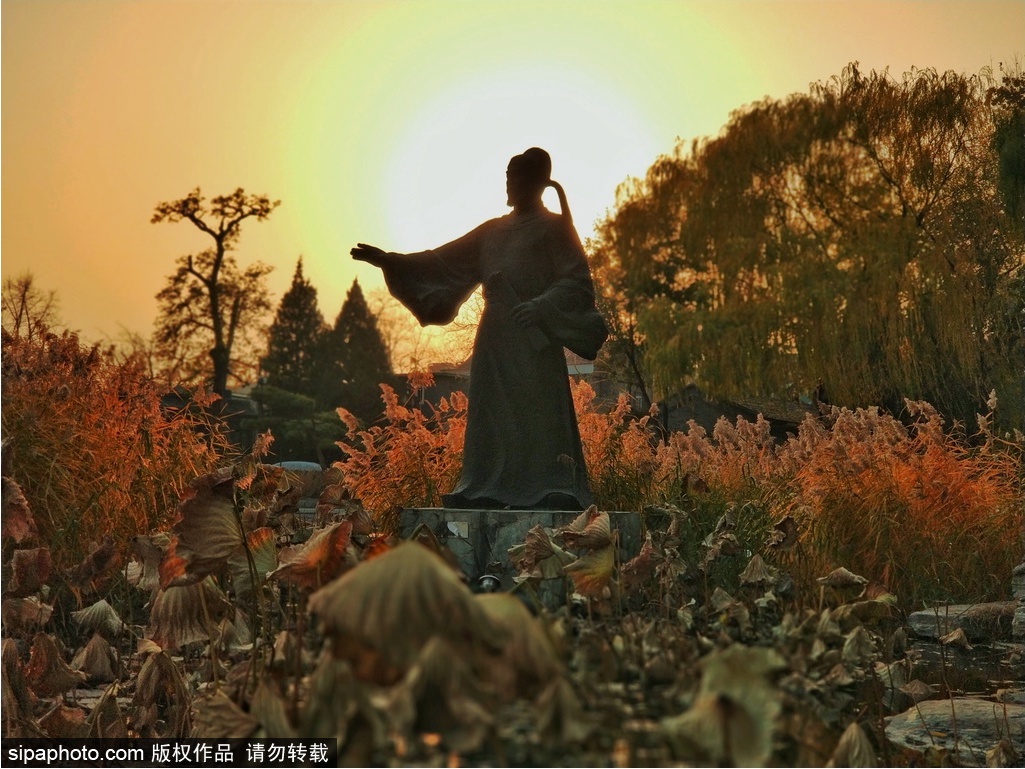
Prince Chun's Mansion
Prince Chun's Mansion is located at Houhai Beiyan and was originally the mansion of Mingzhu, the Grand Secretary of the early Qing Dynasty. In the 54th year of Emperor Qianlong's reign, Yongxing, Qianlong's 11th son was granted the rank of the prince and the mansion of Mingzhu. The mansion was immediately rebuilt according to the system for a palace of a prince. When the mansion was passed to Yusu, it was granted to Yixuan, Prince Chun. The original mansion of Yixuan was located in the Taipinghudongli (current Central Conservatory of Music). Since Emperor Guangxu was born here, the mansion became Qiandi, the residence of an emperor before he succeeded to the throne, and Prince Chun must move out after Guangxu succeeded to the throne. To distinguish them, the mansion of Prince Chun in the Taipinghu is called the Southern Mansion while the new mansion in the Houhai Beiyan called Northern Mansion. The Northern Mansion faces the south. The palace garden stood in the west area. After 1949, it was renovated and became the residence of Soong Ching Ling (see the Former Residence of Soong Ching Ling). The east area is the mansion itself, divided into the middle route, central route and west route. In the central route, there are the main buildings from south to north, with five street gates. In 1910, Wang Jingwei made a plot to bomb the Regent, which became the breaking news in the whole country. A part of Prince Chun's Mansion was used as the Former Residence of Soong Ching Ling.
Yandai Byway

In the north of Di’anmen and in front of the Drum Tower, the Yandai Byway looks like a tobacco pipe, and is the oldest byway in Beijing. It spans from northeast to southwest, with a length of about 300 meters. At that time, most of the banner people in the northern city had the hobby of smoking tobacco in a long-stemmed Chinese pipe or smoking a water pipe, so the tobacco industry boomed.
Mei Lanfang’s Former Residence
Mei Lanfang’s Former Residence is located at No. 9, Huguosi Street, Xicheng District. It was a part of Prince Qingqin's Mansion.
Guo Moruo’s Former Residence
Guo Moruo’s Former Residence is located at No. 18, Qianhai Street West, West Bank of Shichahai. It was the stall of Prince Gong's Mansion. Guo Moruo had lived here for 15 years from 1963 to 1978 before he passed away. The residence was housed in a Siheyuan with a beautiful environment. Among the former residences of celebrities except the Former Residence of Soong Ching Ling, this one is relatively better.
Former Residence of Soong Ching Ling
Former Residence of Soong Ching Ling used to be the palace garden of Prince Chun of the Qing Dynasty, Zaifeng. It was located at No. 46, Houhai Beiyan, Xicheng District, Beijing. This was a typical Chinese courtyard. In this tranquil place, there were lush vegetation in the rockeries, shady flowers and trees and winding clear lakes. After the founding of new China, the Party and government had planned to build a residence in Beijing for Soong Ching Ling, but she politely declined the plan because many things were to be done for our country. With the involvement of Premier Zhou, the palace garden was finally used as Soong Ching Ling's residence and renovated. Soong Ching Ling moved here in 1963. She had worked, studied and lived here for nearly 20 years until she passed away in July 29, 1981.
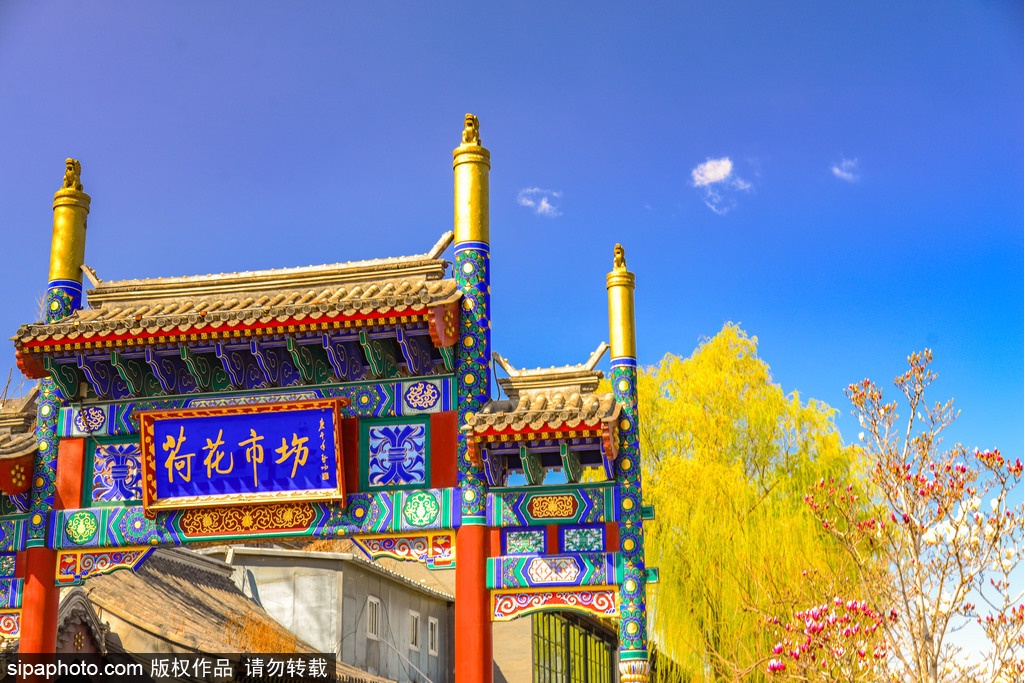
Address: Yangfang Hutong, Xicheng District, Beijing
Transportation
Taking Line 6 to Beihaibei Station, or taking Bus 5, 60, 107 or 124 to Gulou Station; taking Bus 13, 107, 111, 118, 609 or 623 to Beihai Beimen Station, and walking to the north along the Qianhai



